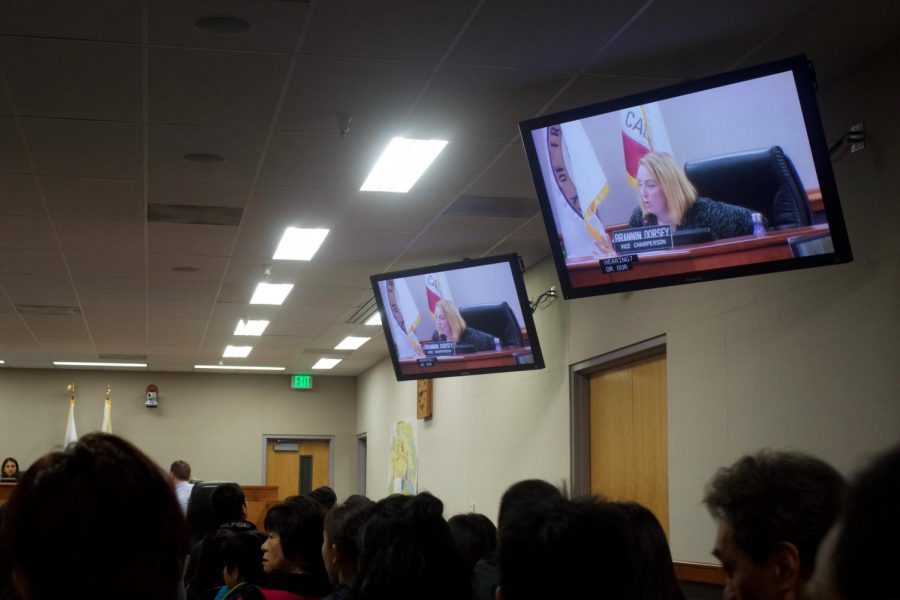Fremont Planning Commission approves Verizon’s controversial service tower in center of residential area
Vice Chair Brannin Dorsey questions the applicant Verizon representative Michelle Ellis after the public presentations.
December 19, 2017
On Thursday, October 9, the Fremont Planning Commission held a public hearing regarding Verizon’s request to construct a wireless facility on the property of Our Lady of Guadalupe Parish, the center of a densely residential area.
Legislation such as Fremont’s “Wireless Facilities Ordinance” would typically prohibit wireless installations in residential zones. However, projects in residential areas can still be approved if the Planning Commission finds that there are unique circumstances, the project is on a suitable site, and the project is least visually disturbing as possible. In addition, the Federal Telecommunications Act (FTA) limits the Commission’s influence over projects related to radio frequency.
In addition to the complications of constructing in residential zones, the tower site is close to several public schools–Irvington High School, Harvey Green Elementary, and Robertson High School–areas that children and teenagers frequent.
This aspect of the installation has sparked local resistance from citizens and parents who are worried about the possible health consequences as well as the implications of allowing such an installation in a residential zone.
A petition on Change.org opposing the construction of the tower collected 1,173 signatures. Fremont residents again opined their dislike for the tower site by filling City Hall to capacity on the night of the hearing. Attendance was so high that in order to avoid breaking Fire Code, multiple attendees were directed towards overflow rooms. Eighteen speakers submitted requests to present including several Irvington students who addressed and delivered speeches to the planning commission: Irvington Health and Wellness Club president Bryan Kuo (11) and two ASG members Andey Ng (12) and Rohith Dara(12).
In response to the criticism, Verizon stated in the Commission Report that the goal of the installation was “to improve the coverage of the surrounding area and increase data streaming capacities.” Verizon representative Michelle Ellis elaborated Verizon’s purpose: concentrated and growing demand for data-streaming was overtaxing the existing towers, which are all located on the fringe of the Blacow residential zone, resulting in a service gap. Ellis stated that such a gap was dangerous and could inhibit 911 calls and emergency response. Other Verizon representatives, including a radio technician and an attorney were also present and would alternatively respond to questions based on their expertise.
The entirety of the hearing revolved around the potential health effects of being constantly exposed to wireless emissions. Several speakers also expressed their worry for the physical danger the tower children. In his speech, Kuo mentioned several studies linking to possible symptoms of extended exposure to wireless frequencies including cancer as well as mood disorders.
“Many of the Irvington and Robertson high school students already face high levels of academic stress along with other mental and emotional challenges that come with the changes of adolescence,” Kuo said. “These additional mental burdens would escalate students’ stress levels to an even greater degree.”
Ng and Dara both presented as members of the Irvington community as opposed to ASG members, as they lived close to the site and would be directly impacted by the structure.
“I didn’t hear about this from ASG,” Ng said. “The school didn’t get a notification even though we are right next to the tower. We live right next door to Irvington and not even all our neighbors got notified. Rohith, Bryan, and I are here as representatives of Irvington. He [Rohith] also lives close by and didn’t get notified.”
The commission took a final vote and approved the project with three ayes, one nay, and one member abstaining.










